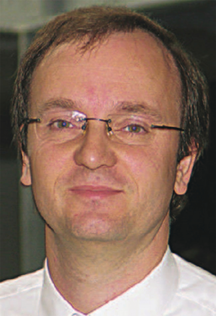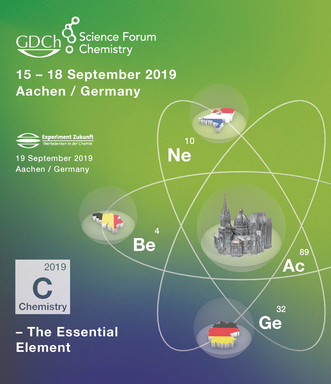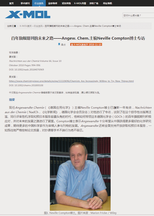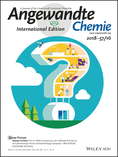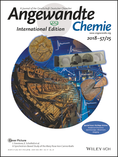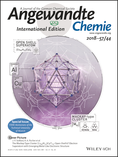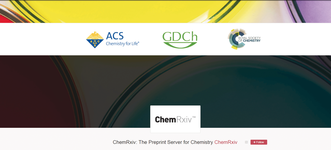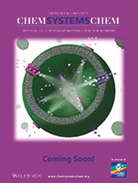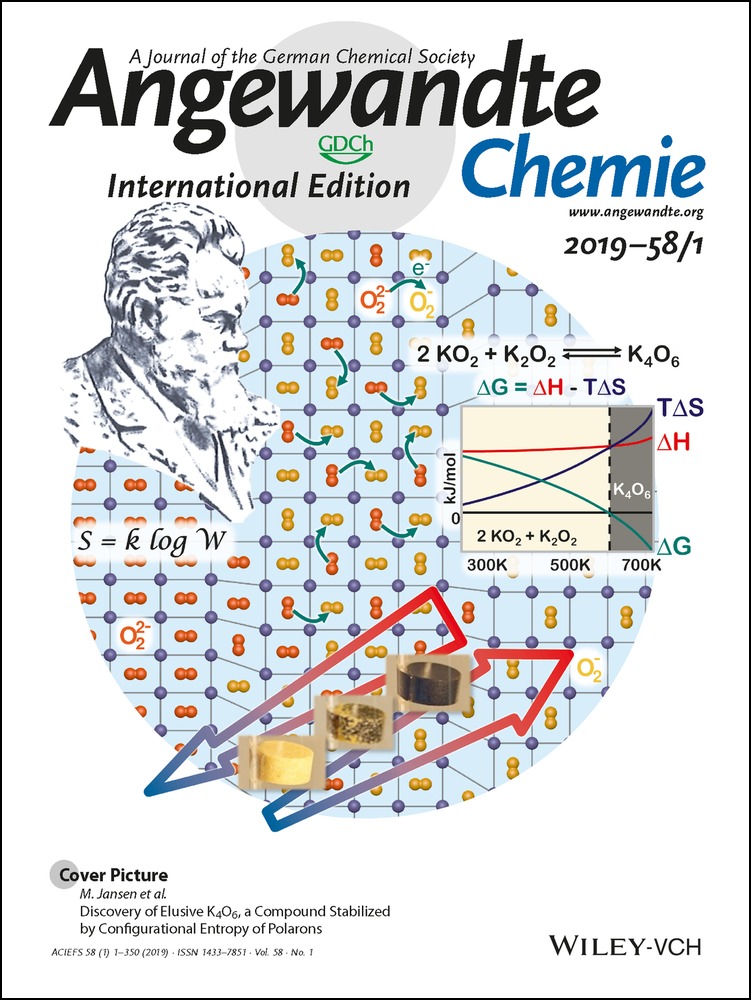Celebrate Chemistry's Essential Elements
Graphical Abstract
International Year of the Periodic Table of Chemical Elements: 2019 presents an excellent opportunity to celebrate chemistry and its core values and strengths because the United Nations proclaimed 2019 the International Year of the Periodic Table of Chemical Elements (IYPT 2019), a fitting decision given that 2019 marks the 150th anniversary of the discovery of the periodic system of elements by Dimitry Mendeleev. The periodic table is of fundamental importance to chemists and chemistry providing a framework for predicting the appearance and properties of matter. The European Chemical Society (EuChemS), of which the German Chemical Society (GDCh) is an active member, has produced a special version of the periodic table to mark this occasion, showing how important it is to protect endangered elements (Figure 1). This is available free to download. Where would chemistry be if we run out of certain elements? I encourage all chemists worldwide to participate in events around IYPT 2019 to promote the positive impact chemistry has on all aspects of our society.
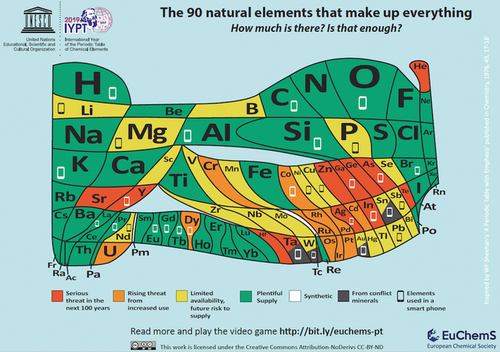
The special version of the Periodic Table from EuChemS showing the endangered elements.
Careful Comparisons Are Essential to Good Science: With this backdrop of collaborations, it was even more surprising then that as part of their “Strength in Numbers” campaign the ACS decided to place an advert in C&E News and make comparisons between JACS and Angewandte Chemie. There has been a friendly rivalry between the journals as well as a mutual respect for as long as I can remember. Both journals have always been advocates of quality first and have abided by the highest ethical standards. These have been the benchmarks that have made the two journals so successful over the years. As a scientist I have no problem with comparisons based on comparable data. I even appreciate that there is a certain “marketing spin” and a rather unscientific presentation of data often used to make a point in such campaigns. However, what became apparent on closer inspection of the data presented was that it contained a serious error with respect to the publication times for the two publications. According to the advert, the time to publication data for the two journals were compared for “submission to online publication after editing, formatting, and proofreading [for the period between] January 2016 through July 2017” but without other specifics. Angewandte Chemie was given a time of 27.1 weeks and JACS 9.6 weeks—a major difference. Such a differential would not only have been very surprising, it would have been unacceptable to the Editorial Staff of Angewandte Chemie, the German Chemical Society, and the majority of our authors. Thus, when making such comparisons the organization doing so has a responsibility to ensure that the data are accurate and make sense. Why did this massive difference not set a few alarm bells ringing in those presenting this data in a comparison advert between two otherwise very similar journals? It took us a while to find where the number used could have come from as it bore no relation to the values we had for the >4000 communications that were published in that period and no specifics were mentioned in the advert. After analyzing all our data it became clear that the number quoted for Angewandte Chemie in this comparison was only for the 101 comprehensive Review articles published in the journal in that period after their translation into German and copyediting and proofing and had nothing to do with any of the Communications published.
After contacting the ACS and making them aware of their mistake, they reanalyzed their data and found where the problem had arisen. At the time of writing this editorial, the ACS were finalizing a correction that was due to be published in C&E News and we and the German Chemical Society were given assurances that more care would be taken in future. It is imperative that scientists and the organizations that represent them abide by the highest standards—something which is more important than ever in the current political climate.
Setting the Record Straight: Given the data previously presented in the advert, we decided to examine the publication time data for the respective journals. Rather than using data from 2016 and 2017, we thought it more appropriate to look at data from 2018. Accordingly, we took a large data set for all the Communications published online in Angewandte Chemie and in JACS in issues 1–40 in 2018; the times from submission to the publication of the “Accepted Article” version online for Angewandte Chemie were 43 days (median) and 48 days (mean) for the 2030 Communications published. For the 642 Communications published in JACS in issues 1–40 in 2018 the comparable data for submission to the “Just Accepted Manuscript” online is 51 days (median) and 56 days (mean). A proper comparison of the times for the version of record after editing and proofing was not possible as the ACS journals do not publish this date in their publications and only retain the initial date of online publication prior to these processes. As can clearly be seen this is a very different picture than the one originally portrayed, illustrating the importance of making accurate comparisons, understanding the data, and carefully checking it before publication.
Our editorial teams and technical teams have already shortened these times further and will continue to do so over the coming months and years to ensure our authors receive the excellent service their excellent papers deserve. The professional Editors at Angewandte Chemie are fully independent and have no competing interests. Your manuscript is our number 1 priority.
In my first full year as Editor of Angewandte Chemie I had the privilege to attend a number of great conferences including ACS Meetings in New Orleans and Boston, the 53rd Bürgenstock Conference in Switzerland, the Chemiedozententagung in Jena, Germany, the 7th EuChemS Chemistry Congress in Liverpool, UK, and the National Organic Symposium Trust (NOST) meeting in Goa, India (Figure 2), where I had the chance to meet so many excellent chemists and listen to and discuss so much excellent chemistry.
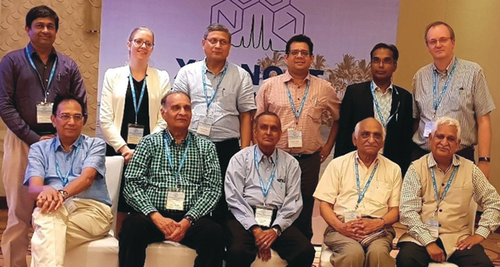
Visit to the NOST conference in Goa, India. Top row: Krishna P Kaliappan (NOST Council member), Philippa Ross (Editor Chem. Commun), Vinod K. Singh (NOST Council member), Sandeep Verma (co-chair of NOST XIX), Srivari Chandrasekhar (co-chair of NOST XIX), Neville Compton (Editor Angewandte Chemie); bottom row: Ganesh Pandey (vice-chairman of Trustees), Goverdhan Mehta (Trustee), K. Nagarajan (Secretary of Trustees), G. S. R. Subba Rao (Trustee), S. Chandrasekaran (chairman of Trustees).
Early in 2018, WileyOnline Library was relaunched. This was an important development that will provide Angewandte Chemie with a more flexible platform for future features in an ever-changing digital world.
GDCh Campus Events: Over the course of 2018 the GDCh ran another four successful GDCh Campus Events at the Friedrich-Alexander-Universität Erlangen-Nürnberg, the Goethe-Universität Frankfurt, the Westfälische Wilhelms-Universität Münster, and a joint event with the Austrian Chemical Society (GÖCH) at the University of Innsbruck; all events featured a mixture of excellent lectures from top researchers from academia and industry and publishing workshops given by experienced members of the editorial teams of the GDCh, ChemPubSoc Europe, and ACES journals.
New Developments in the Editorial Offices: On October 1, 2018, Dr. Nathalie Weickgenannt was promoted to Deputy Editor of Angewandte Chemie; she joins Dr. Frank Maaß in this role and will help to shape and lead the journal through the upcoming years. In addition, Dr. Xin Su joined the Angewandte staff as Senior Associate Editor, becoming the first member of the Editorial Staff of Angewandte Chemie to be based in China. Xin Su will be located in Shanghai and will head up a growing Editorial team for the ChemPubSoc Europe and ACES journals (see a recent interview with Xin Su in ChemistryViews). The Angewandte Chemie team has also been strengthened by the addition of Dr. Polina Smirnov, Dr. Laura Woodward, and Dr. Lisa Pecher.
Recently, Frank Maaß, Nathalie Weickgenannt, Xin Su, and I visited the headquarters of the GDCh to talk with Professor Wolfram Koch, Executive Director, and his team about coordinating the developments of Angewandte Chemie and the international role of the GDCh in world chemistry (Figure 3).
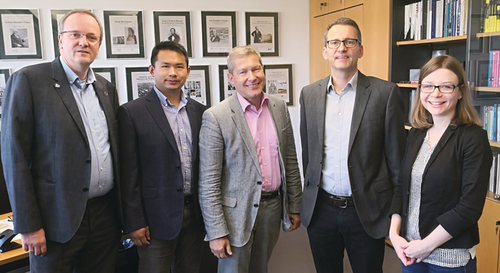
Visit to the GDCh headquarters in Frankfurt: left to right Dr. Neville Compton (Editor-in-Chief), Dr. Xin Su (Senior Associate Editor), Professor Wolfram Koch (Executive Director, GDCh), Dr. Frank Maaß (Deputy Editor), and Dr. Nathalie Weickgenannt (Deputy Editor).
As part of the development of the journal, we have added Viewpoints to the range of options we offer to authors to present their chemistry. Viewpoints are opinion-based contributions used to give an author′s own thoughts on important developments in a specific area and the implications for future research. Viewpoints may be controversial, and while the author should put forward their own point of view, counter arguments should not be ignored but rather refuted through discussion.
Among the ChemPubSoc Europe Journals, Dr. Anne Nijs has been promoted to Editor-in-Chief of the European Journal of Organic Chemistry, Dr. Ruben Ragg to Editor-in-Chief of ChemBioChem, and Kate Lawrence to Editor-in-Chief of ChemElectroChem.
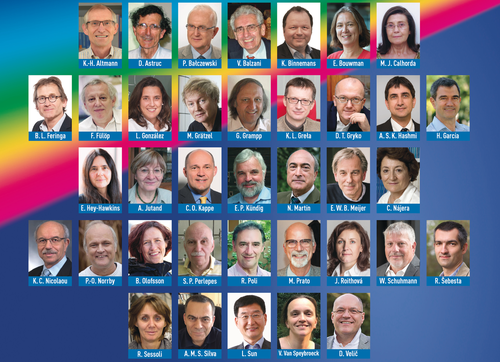
The newest group of ChemPubSoc Europe Fellows who have all helped shape European chemistry.
Board Matters: The terms of office of Professor Christof Niemeyer from the Karlsruhe Institute of Technology (KIT) and Professor Alois Fürstner from the MPI Kohlenforschung, Mülheim finished at the end of 2018. I would like to thank them both for their tremendous support and advice over their time on the Editorial Board and for facilitating such a smooth transition during the change in Editor-in-Chief. Professor Annette Beck-Sickinger from the Universität Leipzig was voted the new Chair of the Editorial Board, and Professor Klaus Griesar from Merck KGaA Darmstadt was named the new Deputy chair. In addition, at the Editorial Board meeting in March 2018, the Editorial Board of Angewandte Chemie recommended Professor Helma Wennemers from the ETH Zürich, Professor Armido Studer from the WWU Münster, and Dr. Michael Brands, Senior Vice President Small Molecule Innovation at Bayer AG, to join their ranks from 2019 and these recommendations were followed later in the year by the Executive Board of the GDCh. Pleasingly, all three agreed to join us. We also would like to welcome Professor Cathleen Crudden from Queen's University, Kingston, Ontario, to the International Advisory Board and to thank Professor Jens Nørskov, Stanford for his dedicated service. For more details on the new Board members see the News Section in this issue.
A highlight of the year was the award of the Nobel Prize for Chemistry to International Advisory Board member, Professor Frances Arnold from the California Institute of Technology, Pasadena, for her work on the directed evolution of enzymes. She shares the award with Professor George O. Smith and Sir Gregory P. Winter who worked on the phage display of peptides and antibodies. Congratulations from the GDCh and all associated with Angewandte Chemie. See the Highlight in this issue by U. T. Bornscheuer, B. Hauer, K. E. Jaeger, and U. Schwaneberg entitled “Directed Evolution Empowered Design of Natural Proteins for Sustainable Production of Chemicals and Pharmaceuticals”, which discusses these achievements.
First Issue: In addition to the Review and Minireview mentioned above, this first issue of 2019 contains a Minireview by F. R. Wurm and co-workers on “Plastics of the Future? The Impact of Biodegradable Polymers on the Environment and on Society” and a thought-provoking Viewpoint by R. Schlögl entitled “Put the Sun in the Tank: Future Developments in Sustainable Energy Systems”, focussing on two key issues facing all of us. This issue also features an Essay by J. C. Fontecilla-Camps on “Geochemical Continuity and Catalyst/Cofactor Replacement in the Emergence and Evolution of Life”. Among the excellent Communications presented are one from our outgoing Editorial Board Chair Alois Fürstner and his co-workers on “Metathesis at an Implausible Site: A Formal Total Synthesis of Rhizoxin D” and one from the newly elected Editorial Board member Armido Studer and colleagues on “Silyldefluorination of Fluoroarenes by Concerted Nucleophilic Aromatic Substitution”. The first Front Cover of 2019 features work by former Editorial Board member Martin Jansen and co-workers on “Discovery of Elusive K4O6, a Compound Stabilized by Configurational Entropy of Polarons”. This selection serves as a taster for the diverse range of chemistry that will be covered over the year by Angewandte Chemie.
It is clear that in the next few years there are going to be major changes in the way chemistry is published. Angewandte Chemie and the GDCh will look to be at the forefront of these developments and look to provide innovative ways to promote the top chemistry and chemists during these changing times.



